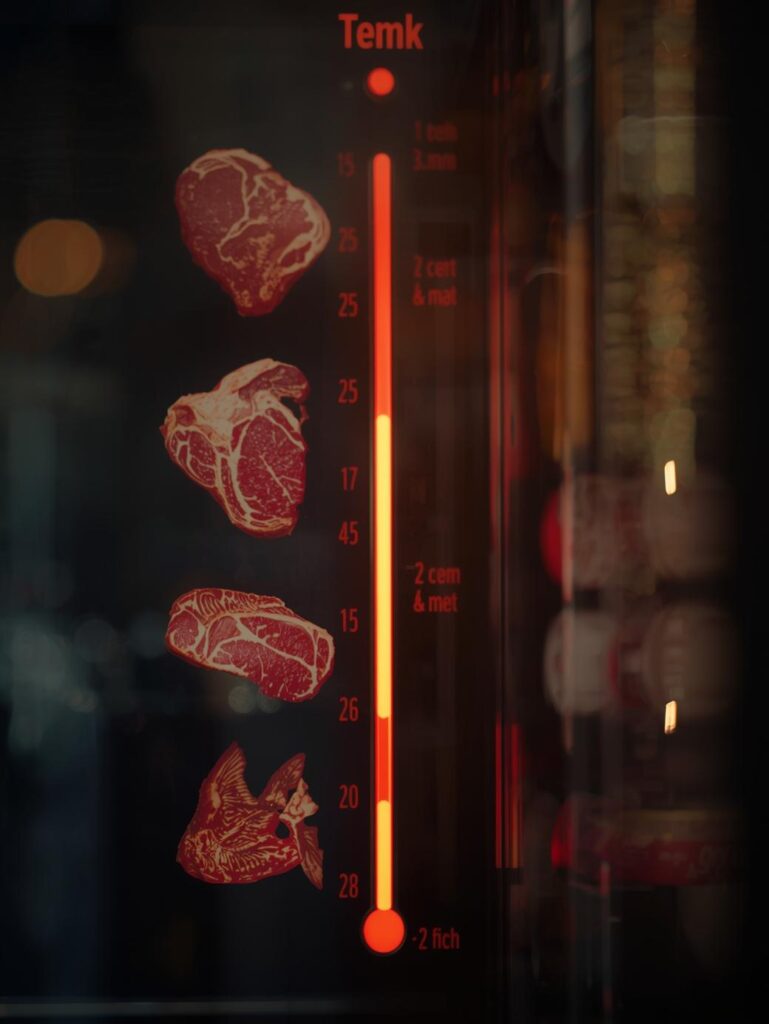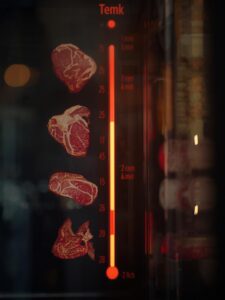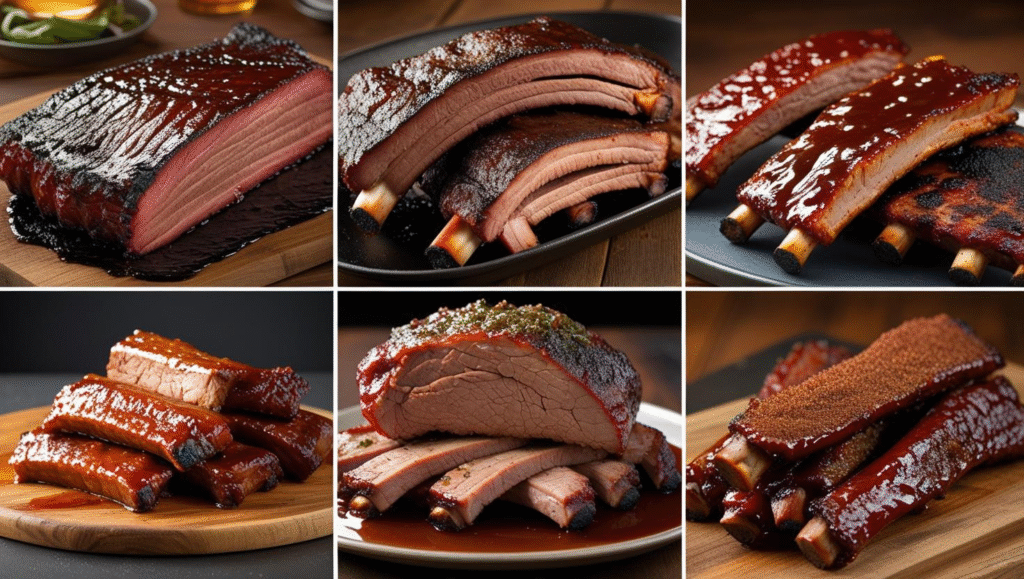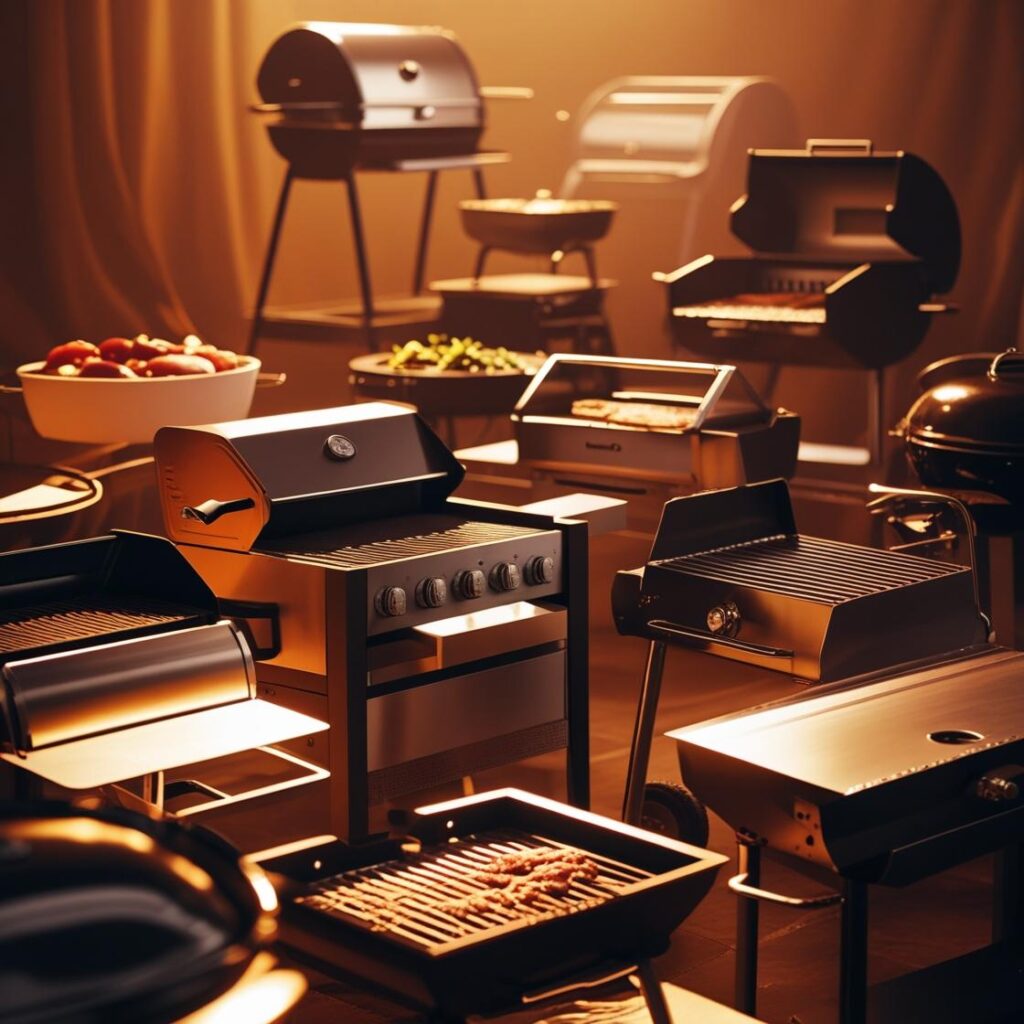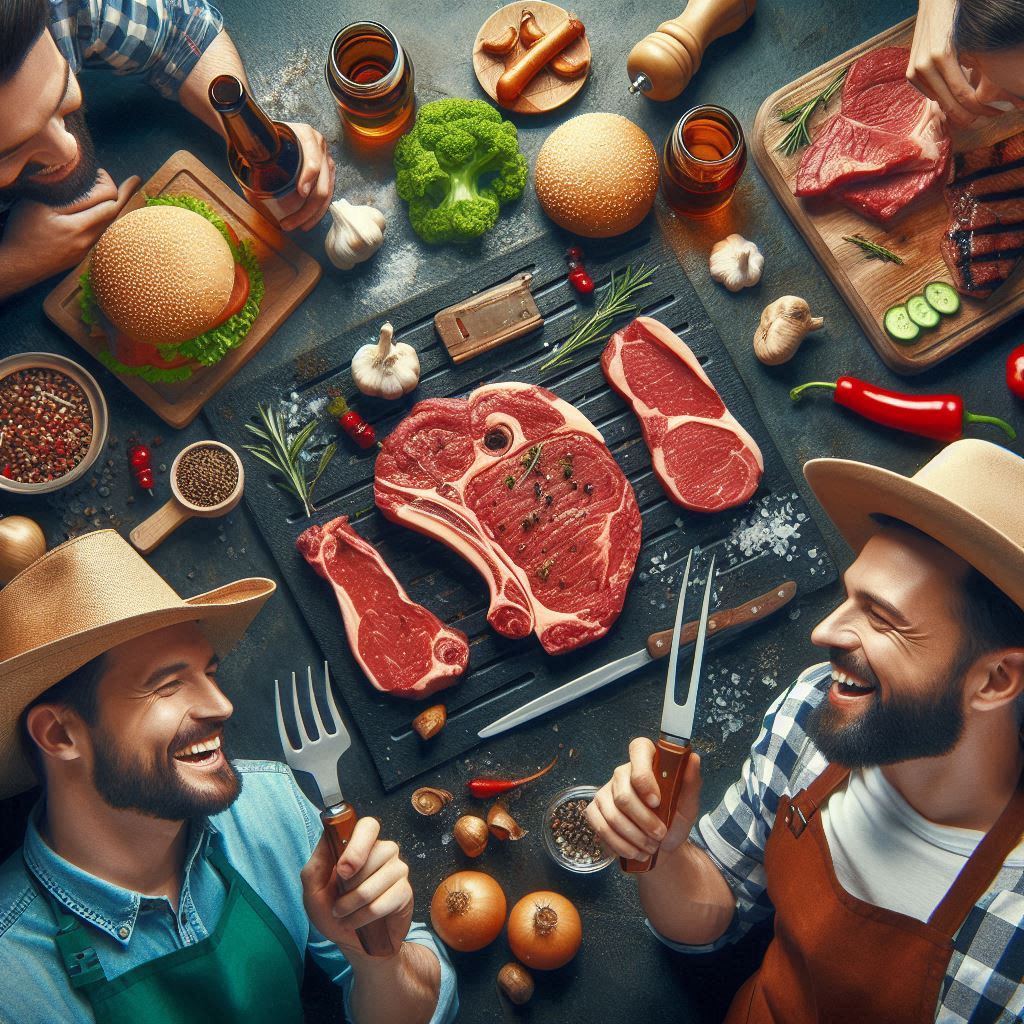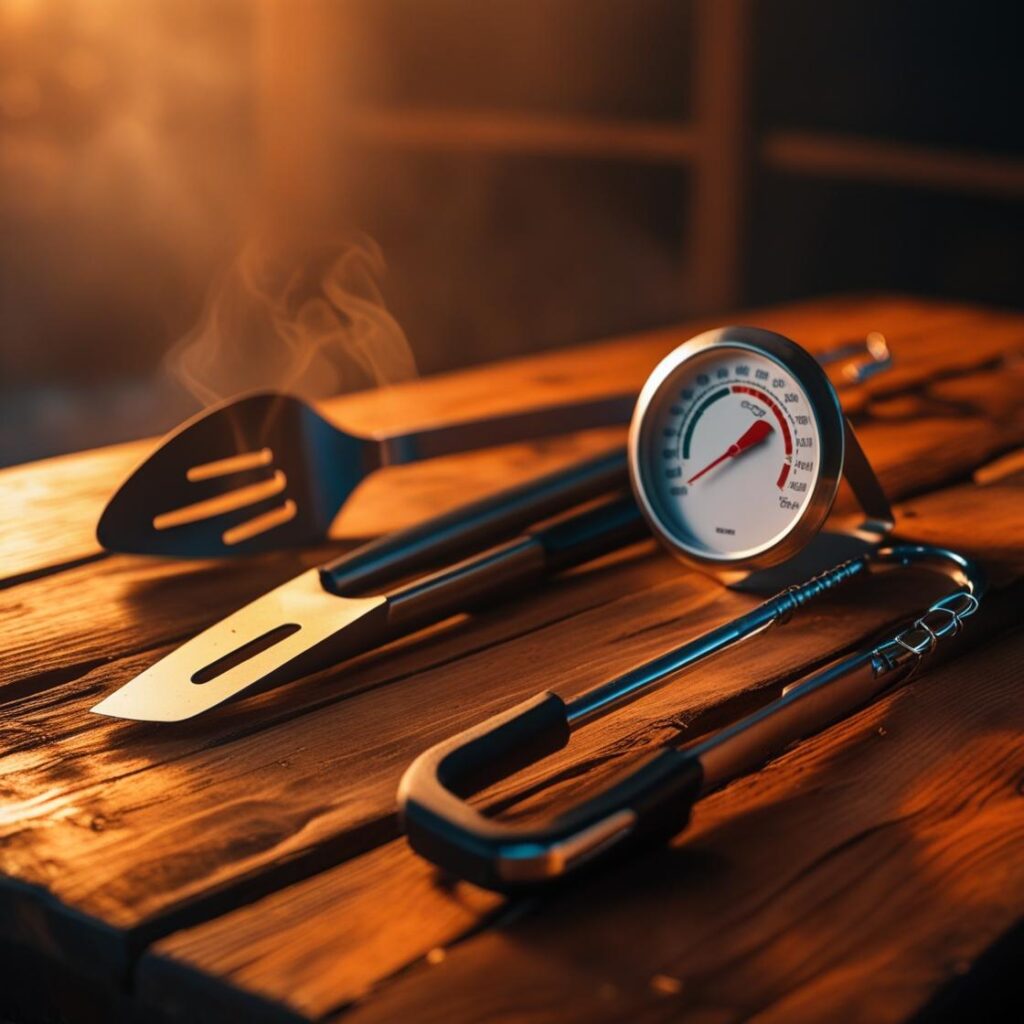Expert’s Note: This guide is part of our comprehensive BBQ Methods & Techniques Encyclopedia. Explore our complete master guide to become a true grilling expert.
Sunday Experiment: 5 Doneness Temperatures You Need to Memorize NOW
Ever had a moment of grilling panic, poking your steak and wondering if it’s perfectly medium-rare or destined to be a leathery disappointment? The guessing game is the enemy of great barbecue. While visual cues and the “touch test” might work for pros, the only way to guarantee a safe, juicy, and perfectly cooked meal every time is by knowing your internal temperatures. Memorizing just a handful of key doneness temperatures is the simplest skill that will instantly elevate your cooking.
5 Doneness Temperatures You Need to Memorize
5 Doneness Temperatures You Need to Memorize NOW
This weekend, we’re inviting you to take on a new challenge. Consider this your Sunday Experiment—a simple memory exercise that will transform your grilling confidence. We’re not covering every temperature for every cut. We’re focusing on the five most critical meat temperatures that will cover 90% of your grilling. Master this simple meat temperature guide, and you’ll never second-guess your doneness again.
New to temperature control? Start with these essential guides:
The Core Principle: Stop Guessing, Start Measuring
The single most important lesson in any cooking tutorial is this: doneness temperatures are non-negotiable. Time and visual cues are unreliable. A thick steak will take longer than a thin one. A hot grill cooks faster than a cooler one. The only constant is the internal temperature. Relying on temperature is the most important skill you can learn, and it’s why an instant-read thermometer is one of the 4 must-have tools for perfect meat every time.
Understanding the proper cooking temperatures is also a matter of food safety. While some meats can be safely eaten at lower temperatures, others need to reach a specific heat to kill harmful bacteria.
The 5 Doneness Temperatures You Need to Master
Essential Equipment: Get the right tools for perfect results:
1. Steak: 125°F (Pull Temp)
The secret to perfect medium-rare.
-
Why this temperature: The final temperature for medium-rare is 135°F, but you must pull it off the heat early to account for carryover cooking. The residual heat will continue to cook the center, bringing it to the perfect 130-135°F as it rests. This is the key to the 135°F rule for perfect medium-rare steak.
-
Pro Tip: Always let your steak rest for 5-10 minutes after pulling it from the heat. This allows the juices to redistribute, a key step from our guide on 3 resting mistakes that drain all juices from your steak.
2. Pork: 145°F
Forget everything you thought you knew about pork.
-
Why this temperature: The old rule of cooking pork to 160°F is outdated and creates dry, tough meat. The USDA revised its guidelines, and 145°F is now the standard. At this temperature, pork is perfectly safe and remains incredibly juicy and tender with a slight blush of pink. This is one of the most important food safety temperatures to remember.
3. Poultry: 165°F
The non-negotiable safety standard.
-
Why this temperature: Chicken, turkey, and other poultry must reach 165°F to be safe to eat. This temperature ensures harmful bacteria are destroyed. While many fear this means dry chicken, when cooked properly (not overcooked!), poultry at 165°F is still perfectly juicy. It is one of the most important safe cooking temperatures for meat.
4. Low-and-Slow BBQ: 195-205°F
Where toughness transforms into tenderness.
-
Why this temperature: For tough cuts like brisket or pork shoulder, doneness isn’t about safety—it’s about texture. Between 175°F and 205°F, tough collagen breaks down into rich, juicy gelatin. The meat is done when it’s “probe tender,” meaning a thermometer probe slides in with little resistance, usually between 195°F and 205°F. This is a critical principle for mastering low-and-slow barbecue techniques.
5. Fish: 140°F
The sweet spot for flaky perfection.
-
Why this temperature: Fish is delicate and can go from perfectly flaky to dry and tough in moments. At 140°F, fish is cooked through but remains incredibly moist and tender. For a slightly more translucent center (like for salmon), you can pull it at 125°F, but 140°F is a reliable benchmark for perfectly cooked, flaky fish.
Quick Reference Chart: Pin this to your grill station!
Weekend Success Tips: Avoid common temperature mistakes:
🔗 Official Food Safety Resources
For official food safety guidelines and cooking standards, consult these authoritative sources:
- 🏛️ USDA Safe Minimum Internal Temperatures
Official government temperature guidelines for meat safety - 📋 FoodSafety.gov Food Safety Guide
Federal food safety standards and procedures - 🎓 FDA Safe Food Handling
Food and Drug Administration safety guidelines
These external resources provide additional authoritative information on food safety standards and cooking guidelines.
Now that you’ve memorized the temperatures… Let’s bring it all together with our final thoughts on your Sunday Experiment.
Conclusion: From Guesswork to Grilling Mastery
Mastering your grill is a journey, and memorizing these five doneness temperatures is one of the most important steps you can take. It’s the difference between hoping and knowing. By using a reliable thermometer and understanding these key cooking temperatures, you will cook with unshakable confidence, create safer and more delicious meals, and impress everyone at your table. Stop the weekend guesswork and start enjoying the science of perfect results.
Ready for Your Sunday Experiment?
Join thousands of home chefs who are mastering temperature control and achieving perfect results every weekend.
Continue Your Weekend Cooking Journey: Explore more weekend-friendly techniques:

